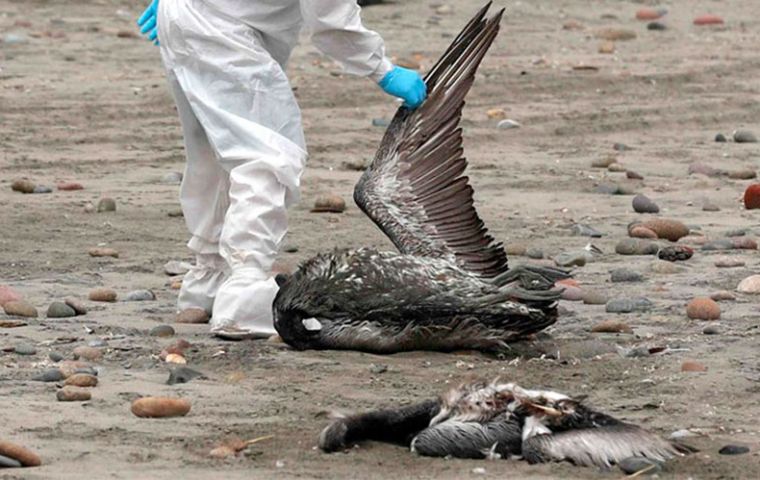MercoPress. South Atlantic News Agency
Bird flu spreading fast in northern Chile
 Health authorities in Europe are studying the possibility of using vaccinations to stem the spread of the virus
Health authorities in Europe are studying the possibility of using vaccinations to stem the spread of the virus Chile's Agriculture and Livestock Service Wednesday reported 1,030 bird deaths due to avian flu in northern regions of the country, at the same time Europe goes through the worst-ever outbreak of the disease.
The Veterinary Medical Association of Chile also announced there was little probability of contagion at the industrial level thanks to biosecurity measures in place.
After the first case of avian flu was detected in Chile two weeks ago, the disease has advanced rapidly in the regions of Arica and Parinacota, Tarapacá, Antofagasta, and Atacama. The Ministry of Agriculture recommended avoiding direct contact with wild birds dead or alive and to alert the Agriculture and Livestock Service.
Livestock Protection Division head Carlos Orellana explained that 1,030 birds had died due to the flu, with six species infected and 13 active outbreaks in northern regions. ”As of today, we have four regions with outbreaks of the disease (...) we have 13 outbreaks detected, with six affected species, 480 birds sampled in the area, obtaining a result of 53 positive samples and we have 1,030 dead birds, said Orellana.
Universidad de Chile scholar Víctor Neira pointed out that avian flu could cause serious economic losses if it reaches poultry, such as turkeys and chickens, although birds used for industrial production are unlikely to be infected since most companies have reinforced their biosecurity measures. “There is a greater probability that the avian influenza virus will first pass from wild birds to backyard poultry because there are fewer security or biosecurity measures,” he pointed out.
Although human infections with avian flu are unlikely, they can occur after close contact with infected birds. People have been advised to wash their hands frequently and use protective equipment, such as gloves and masks.
Meanwhile, Europe is enduring the most devastating bird flu season in its history, with some 50 million birds culled so far. Between October 2021 and September 2022, around 2,500 outbreaks of bird flu were detected on farms in 37 European countries, according to a report published Tuesday by the European Food Safety Authority (EFSA), the European Centre for Disease Prevention and Control, and the European Union Reference Laboratory. The toll did not include preventive culls of chickens, ducks, and turkeys carried out alongside the outbreaks, the EFSA told AFP.
EFSA said that “for the first time” there had been no marked separation between the two epidemic waves, as the virus was not brought under control in the summer. This fall the number of infected farms was 35 % higher. The virus has also been detected more than 600 times in wild birds, notably ducks and swans, which the report said may have contributed to the spread of the virus between farms.
Health authorities are studying the possibility of using vaccinations to stem the spread of the virus.




Top Comments
Disclaimer & comment rulesCommenting for this story is now closed.
If you have a Facebook account, become a fan and comment on our Facebook Page!